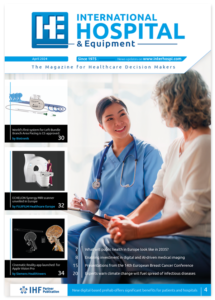Diabetes crisis deepens: 252 million unaware of condition as IDF recognises new type 5 diabetes
The International Diabetes Federation’s latest atlas reveals nearly one in nine adults globally now live with diabetes, while a new classification of malnutrition-related diabetes gains formal recognition.
Global diabetes burden intensifies
The International Diabetes Federation (IDF) has released startling new statistics showing 589 million adults worldwide are now living with diabetes, with a staggering 252 million unaware of their condition. These findings, published in the 11th edition of the IDF Diabetes Atlas on April 7, 2025, represent a significant escalation in the global diabetes epidemic, with numbers projected to reach 853 million by 2050.
Professor Dianna Magliano, co-Chair of the IDF Diabetes Atlas Committee, emphasised: “The new data provides strong evidence that should spark action and promote initiatives to improve the lives of the many millions now living with diabetes and encourage more to detect diabetes in those at risk.”
The report highlights that three in four adults with diabetes reside in low- and middle-income countries (LMICs), where healthcare infrastructure often struggles to address chronic conditions. Financially, the impact has reached unprecedented levels, with global diabetes-related health expenditure exceeding one trillion US dollars for the first time.
Type 5 diabetes formally classified
In a separate announcement on April 15, 2025, the IDF launched a dedicated working group to develop diagnostic criteria and therapeutic guidelines for “type 5 diabetes,” a form of diabetes linked to malnutrition that received formal classification earlier this year.
This distinct diabetes variant, affecting an estimated 20-25 million people predominantly in Asian and African regions, presents as severe insulin-deficient diabetes (SIDD) in lean, malnourished teens and young adults. Unlike type 1 diabetes (characterised by autoimmune destruction of insulin-producing cells) or type 2 diabetes (marked by insulin resistance), type 5 diabetes appears to result from impaired pancreatic development due to chronic undernutrition during childhood or adolescence.
The condition has been observed for over 70 years but frequently misclassified. Recent research confirms its distinct metabolic profile: patients are insulin deficient but not insulin resistant, potentially enabling management with oral medications rather than insulin injections – a crucial consideration for low-resource settings.
Clinical and financial implications
The twin announcements carry significant implications for clinical practice. With 252 million undiagnosed diabetes cases worldwide, opportunities for early intervention are being missed, leading to preventable complications and premature deaths. The IDF reports diabetes is now responsible for over 3.4 million deaths annually.
IDF President Professor Peter Schwarz stated: “The findings underscore an urgent need for bolder national and global action to tackle diabetes. With over 4 in every 10 people with diabetes not yet diagnosed, governments must prioritise screening, early diagnosis, and education.”
Regarding type 5 diabetes, Professor Schwarz noted: “The recognition of type 5 diabetes marks a historic shift in how we approach diabetes globally. For too long, this condition has gone unrecognised, affecting millions of people and depriving them of access to adapted care.”
The newly established Type 5 Diabetes Working Group, co-chaired by Dr Meredith Hawkins from Albert Einstein College of Medicine and Dr Nihal Thomas from Christian Medical College in India, will develop formal diagnostic criteria, establish a global research registry, and create education modules for healthcare professionals.
- IDF Diabetes Atlas (11th ed.) – https://diabetesatlas.org


